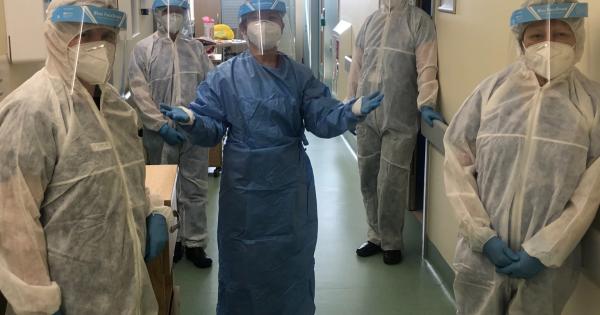The Ontario government, in consultation with the Chief Medical Officer of Health, local medical officers of health, and other health experts, is moving seven public health regions to new levels with stronger public health measures, including Windsor-Essex County Health Unit and York Region Public Health moving into Grey-Lockdown. These steps are being taken to stop the spread of COVID-19 in order to keep schools open in the regions where in-class learning is permitted, safeguard health system capacity, and protect the province’s most vulnerable populations. The regional levels and specific public health measures are set out in the Keeping Ontario Safe and Open Framework.
“Moving a region into Grey-Lockdown is not an easy decision, but it is one we needed to make in order to help stop the spread of the virus and safeguard the key services we rely on,” said Christine Elliott, Deputy Premier and Minister of Health. “As we enter the holiday season and as the province prepares to receive its first shipment of COVID-19 vaccines, it remains crucial for all Ontarians to continue adhering to public health advice and workplace safety measures to reduce the spread of the virus and keep each other safe.”
Based on the latest data, the following public health regions will move from their current level in the framework to the following levels effective Monday, December 14, 2020 at 12:01 a.m.:
- Grey-Lockdown
- Windsor-Essex County Health Unit; and
- York Region Public Health.
- Red-Control
- Middlesex-London Health Unit;
- Simcoe Muskoka District Health Unit; and
- Wellington-Dufferin-Guelph Public Health.
- Orange-Restrict
- Eastern Ontario Health Unit.
- Yellow-Protect
- Leeds, Grenville and Lanark District Health Unit.
All other public health regions will remain at their current level. Please visit Ontario.ca/covidresponse for the full list of public health region classifications.
“Over the last week, public health indicators in the York and Windsor regions have continued to trend in the wrong direction and it is evident additional measures are needed to help limit the spread of the virus,” said Dr. David Williams, Chief Medical Officer of Health. “By making this difficult but necessary decision we can help to ensure that hospitals in these regions can work to provide patients with the care they need when they need it, including the performing of scheduled surgeries and other important procedures.”
For long-term care homes, visitor restrictions apply to those homes in the public health unit regions that are in the Orange-Restrict level or higher. In addition, long-term care homes must implement recently enhanced testing requirements.
Trends in public health data will continue to be reviewed weekly to determine if public health units should stay where they are or be moved into a different level. Public health units will stay in their level for a minimum of 28 days, or two COVID-19 incubation periods, at which time, the government will assess the impact of public health measures to determine if the public health unit should stay where they are or be moved to a different level. The government and the Chief Medical Officer of Health will continue to consult regularly with local medical officers of health on local context and conditions to help inform the classification of their public health unit region.
As we approach the holiday season, the government is urging all Ontarians to continue to follow all required public health measures and public health advice. This includes the following:
- Stay home if you have COVID-19 symptoms, even if they are mild;
- Maintain two metres of physical distancing from anyone outside your household;
- Avoid social gatherings and limit close contacts to your household or the people you live with;
- Adhere to the restrictions in your region on public and private gatherings;
- Wear a face covering indoors and wear one outdoors if physical distancing may not be maintained or if wearing one is required;
- Wash your hands thoroughly and regularly;
- Cover your cough;
- Get tested if you have symptoms compatible with COVID-19, or if you’ve been advised of exposure by your local public health unit or through the COVID Alert mobile app;
- Individuals and families from higher transmission regions should avoid travel to lower transmission regions, except for essential reasons; and
- Download the COV ID Alert mobile app.
No matter where you live in the province, the safest way to spend the holidays this year is by only celebrating in person with the people you live with and celebrating virtually with everyone else. People who live alone may have exclusive close contact with one additional household to help prevent feelings of isolation and mitigate against negative mental health impacts.
The Ontario government is now providing $600 million in property tax and energy cost rebates to support eligible businesses required to close or significantly restrict services due to enhanced public health measures, doubling its initial commitment of $300 million made in the 2020 Budget, Ontario’s Action Plan: Protect, Support, Recover. To apply for this funding please visit Businesses: Get help with COVID-19 costs.
































